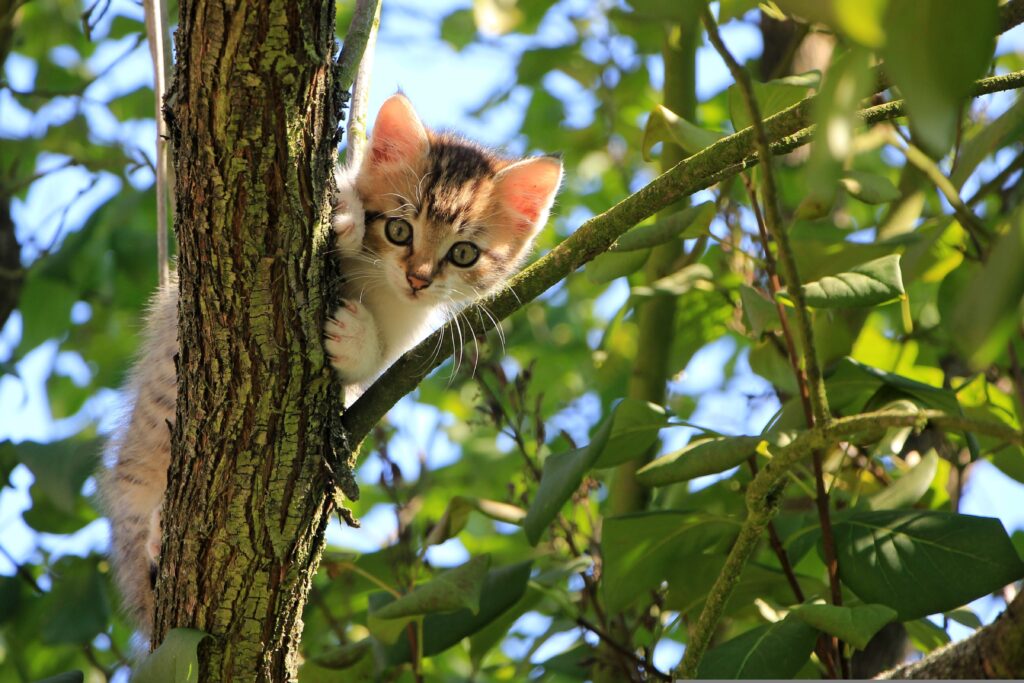
🐾 Adventurous Climber: Why Cats Love to Climb
Cats are born climbers, and their natural instinct to reach higher places comes from their wild ancestors. In the wild, cats climbed trees to stay safe from predators, observe their surroundings, or catch prey. Even though domestic cats now live comfortably in our homes, this instinct is still strong in their nature. When a cat climbs, it is not just about fun; it is also about exercise, confidence, and mental stimulation. A home that provides safe climbing spaces helps a cat feel secure, entertained, and physically healthy.
Climbing plays a big role in keeping cats fit. As they jump and climb, their muscles become stronger and more flexible. This natural form of exercise supports healthy bones and joints, while also preventing obesity and laziness. Unlike regular play, climbing challenges the whole body and keeps a cat active throughout the day. Cats who climb regularly often stay more energetic, playful, and less likely to develop weight-related health issues.
Beyond physical health, climbing also sharpens a cat’s mind. Exploring different heights gives them curiosity and excitement, reducing boredom and stress. When a cat has access to climbing towers, wall shelves, or scratching posts, they stay mentally engaged and satisfied. Without these outlets, cats may become restless and develop destructive habits, like scratching furniture or knocking down objects. Providing safe climbing spaces helps direct their energy in a positive way, making them happier and calmer companions.
Climbing also gives cats a sense of security. They love observing their environment from above, where they feel in control. A tall perch or window seat allows them to watch the outside world, listen to birds, or simply rest peacefully. High spaces are especially comforting for shy cats, who may prefer watching from a distance instead of being in the middle of household activity. These elevated spots help them feel safe while still staying connected to their surroundings.
For indoor cats, cat trees, towers, and shelves are the best climbing options. They provide multiple levels for jumping, resting, and scratching. Wall-mounted shelves also save floor space while giving vertical freedom to explore. Scratching posts are another essential climbing accessory, keeping both claws and energy in balance. A window perch is a favorite spot for many cats, as it combines climbing, sunlight, and entertainment. By setting up these safe climbing areas, you not only protect your furniture but also give your cat a healthy and fun environment.
If your cat goes outdoors, climbing trees and fences is natural, but it also comes with risks. Supervised outdoor play or enclosed garden spaces allow cats to enjoy climbing while staying safe from accidents and predators. Building a cat enclosure or providing a fenced garden is a smart way to let them explore the outdoors without danger. Whether indoors or outdoors, safety should always be the first priority. Stable climbing structures, soft landings, and avoiding sharp objects nearby ensure your cat can climb freely without harm.
Encouraging climbing can be simple. Some cats may hesitate at first, but you can guide them by using treats, toys, or placing their favorite blanket on a higher level. With patience, they will start exploring confidently. For kittens, climbing supports their growing bodies, while for older cats, gentle climbing options keep them active without strain. Every stage of life benefits from safe and engaging climbing opportunities.
In the end, climbing is much more than playtime for cats. It is an expression of their natural instincts, a form of physical exercise, and a source of mental satisfaction. By giving your cat safe climbing options, you are supporting their health, happiness, and confidence. An adventurous climber is not just a curious cat—it is a healthy, strong, and joyful companion who thrives in a home designed to meet its natural needs.
